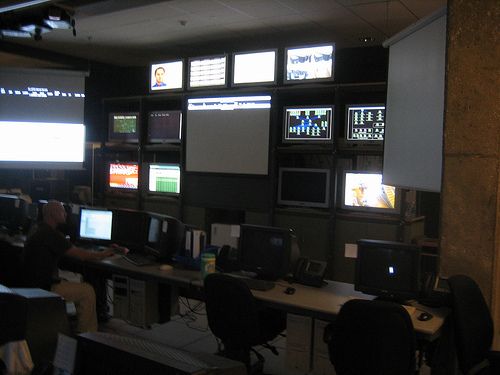... and that one I mentioned? Cost about AUD$2,300 back in 1992.
Wiz, could you imagine what kind of powerhouse of a PC you'd have for that same price now? 
Unlike food & many other things that we need, electronics, to include computers, has plunged in price & increased in power countless times over since the early 90's. Back then, I couldn't even afford a computer, and many others were in the same boat. In the early 2000's, Dell waged a price war like never seen prior, and since then, the pricing has dropped, and the power keeps going upwards (on PC's). Unfortunately, mainstream notebooks & other portables hit their power peak in 2012, Haswell brought major downgrades for mobile users, most i7's are no longer true quad core, and at less than 20W, a joke. Really, how many virtual machines or amount of photo editing does one expect from a non-quad i7? Not much, I hope. Though I fully understand the reasoning, power was sacrificed to obtain battery life, when in reality one could have had both (optionally) with an adapter to install a spare battery in the optical drive's place. Or carry one of many very high mAh extra rechargeable battery packs, that'll plug into a USB port to provide power for hours.
Yet the desktop PC rules, and pricing continues to fall for more powerful units than before. The said can be said for the graphics cards inside, these packs a lot more power, running off the fumes of earlier (& very hot running) models. All of that heat was wasted energy, and with every major release (at least with a nVidia card), the power requirements are less, and more performance in return. I suspect the same with AMD, though I've only had one recent model, a 2012 version that was on promo, the MSI R7770 1GB GDDR5 OC edition that I pulled out of here to swap for a GTX 960. The newer uses less power, runs at lower temps, and gets more done with 2GB of GDDR5 memory.
Same for CPU's, the PC that I replaced this one with was running a P4 (Northwood) CPU at 3.06MHz with H/T, with only 512MB of L2 cache (no L3) & it was using more power than this one does. That CPU when new also cost more than the i7-4770, as it was one of the first CPU's with H/T technology. Unfortunately, it was crippled by the lack of L2 cache & the fact that it was a single core CPU.
Point being, for the most part, we can today purchase a lot more for a lot less, and come another 10-15 years, there's no telling what we can do with the same cash. For desktop users, I'd expect a small to mid sized server PC to replace the traditional PC, or the components will be upgraded to the point where the PC can be used for either mode, and chances are at a minimum, 8 core CPU's on Intel based PC's will be standard equipment (6 core for budget models), along with by then, at least DDR5-6 RAM, and a couple of bumps to the GPU at GDDR8-10. Technology will not stand still, the engineers are working as I'm typing this post to make computers more powerful & energy efficient.
Linux OS's will be absolute powerhouses on this hardware. 
Cat





 Back to top
Back to top


















